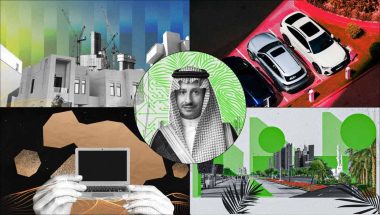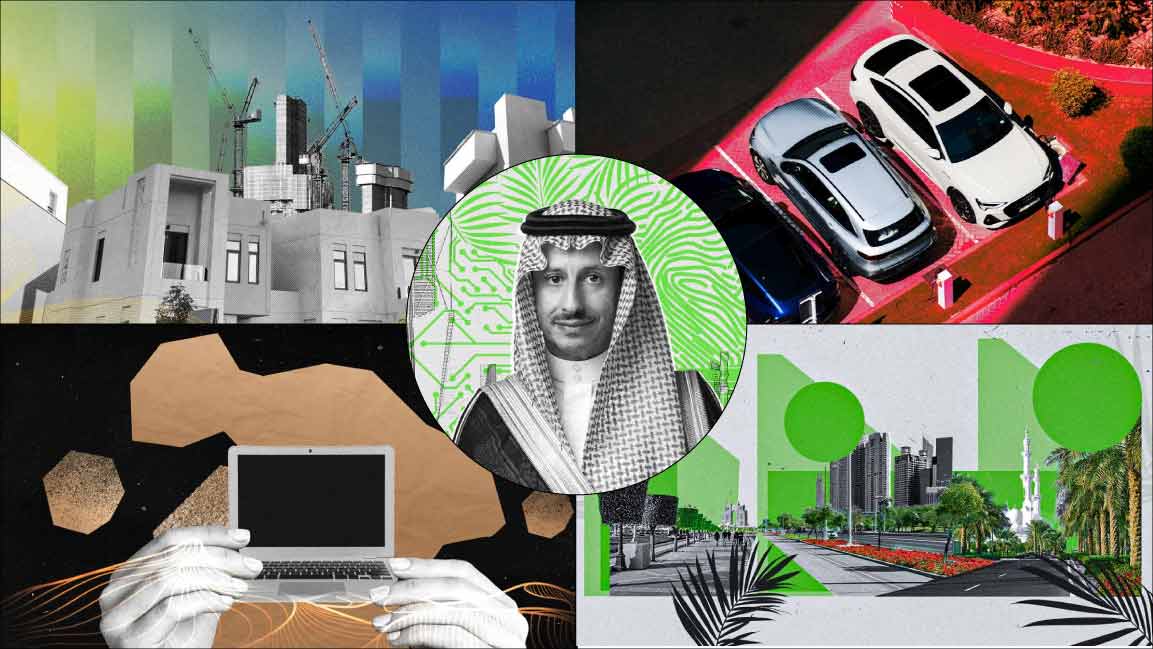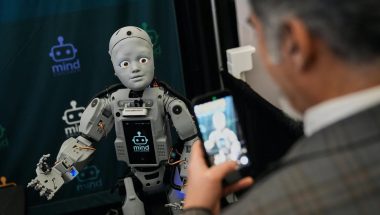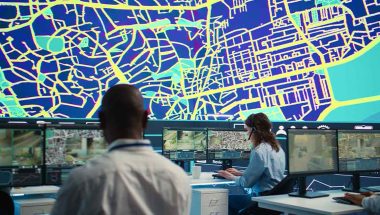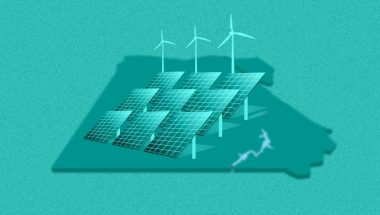- | 9:00 am
Companies in the Middle East region are using AI to combat climate change
With AI increasingly being used to automate tasks and cut costs, some are also using it to address the effects of climate change. But can it really help solve the region’s climate crisis?

2023 was the hottest year on record, and 2024 is expected to be even hotter. In the Middle East, rising temperatures and a decrease in annual rainfall lead to heat waves, droughts, and even water scarcity in some areas.
According to a study published in The Lancet, if global warming continues, the number of heat-related deaths in MENA could increase significantly. An estimated 123 people per 100,000 in the region are predicted to die annually from heat-related causes by 2100, which is about 60x greater than current figures.
In Abu Dhabi, cleantech startup FortyGuard is tackling heat head-on. Its AI platform provides urban temperature data, insights, and analysis to enable people to make smarter decisions for a cooler environment.
“AI is more than a tool; it’s our strongest ally in the fight against climate change,” says Jay Sadiq, Founder of FortyGuard. “We’ve seen firsthand the impact AI can have. It analyzes vast datasets to reveal trends and patterns in urban temperatures, leading to smarter decisions in urban planning, energy management, and public health.”
Since ChatGPT debuted less than two years ago, experts and business leaders believe that AI can significantly accelerate climate action. A BCG survey conducted among global public and private sector climate and AI leaders found that 87% believe AI is useful in the fight against climate change, while 61% indicate that it can play a role in mitigating and reducing emissions.
CASE FOR SUSTAINABILITY
As AI continues to evolve, so will its solutions to fight climate change. Machine learning and big data analytics advancements can further enhance AI’s role in bridging the climate action gap and creating a more sustainable future. Leveraging AI helps to have better data accuracy and reduce costs.
“With advancements in accuracy and coverage of AI models such as OpenAI, we expect to achieve better accuracy and cost optimization in our usage of AI,” says Kapil Gahlot, CTO at Olive Gaea, a UAE-based startup that helps businesses reduce their carbon footprint using its AI.
“The newer AI models can consume more input context at a lower cost than previous models to capture more nuances and improve the output quality.”
Increasing efficiency and cutting costs are not the only benefits of AI. Experts want to use the technology to predict real-world disasters like floods, forest fires, and methane leaks, among other calamities.
“Humans can see anomalies or differences in data after a lot of time has passed,” says Zeid Sinokrot, Founder of Palmear, a startup that uses AI to detect pests in palm trees and other agriculture. “We can’t process all the data points quickly. But the machine can see and predict way faster than humans can. So, by using machine learning and big data, we can get insights to evacuate a certain area, for example, or have an early warning capability.”
“That’s the speed available to us to make faster and smarter decisions and give out information quickly and effectively.”
AI RISKS
Like any technology, however, AI has challenges. Some potential risks associated with AI adoption include data privacy and biased programming, to name a few.
After all, AI is only as good as the data it is fed. That is why the quality of the data matters. “It’s not always about feeding the model with data,” says Sinokrot. “It’s about feeding it with the right data and the right amount of data so that you have a well-fit model balanced to be as smart as a human and maybe even exceed that.”
But that’s not always an easy task. Constant training and testing are necessary to ensure the data is diverse and representative.
FINDING THE BALANCE
Data privacy is also a concern for climate tech businesses using AI.
One of the region’s leading universities in the field of AI, Mohamed bin Zayed University of Artificial Intelligence (MBZUAI), is paying close attention to data privacy concerns.
Yet, even with data privacy protocols in place and the opportunity for AI to solve pressing issues, large-scale AI models often use large quantities of electricity — usually from non-renewable sources — which could strain the environment. Data centers also require a lot of water for cooling – a precious and dwindling resource in the region.”
Data centers account for about 3.5% of global emissions today, according to the International Energy Agency (IEA). And this number is expected to grow.
MBZUAI addresses this concern by developing an AI operating system that reduces energy consumption and emissions. “Computing power is vital to the development of applications, such as a large language model,” says Professor Fahad Khan, Deputy Department Chair of Computer Vision. “This is why MBZUAI is developing an AI operating system, which reduces energy consumption, carbon footprint, and the cost of creating and deploying such AI models and applications.”
Meanwhile, AI continues to grow across industries and be used to address climate change challenges, from predicting climate change patterns to measuring emissions and detecting climate disasters. The key is to find the right balance. “While we continue reaping the benefits of AI for solving real-world problems, we also have to ensure that we are fully transparent,” says Khan. “Our algorithms and methods are fully transparent, and we reduce our carbon footprint in the process.”







